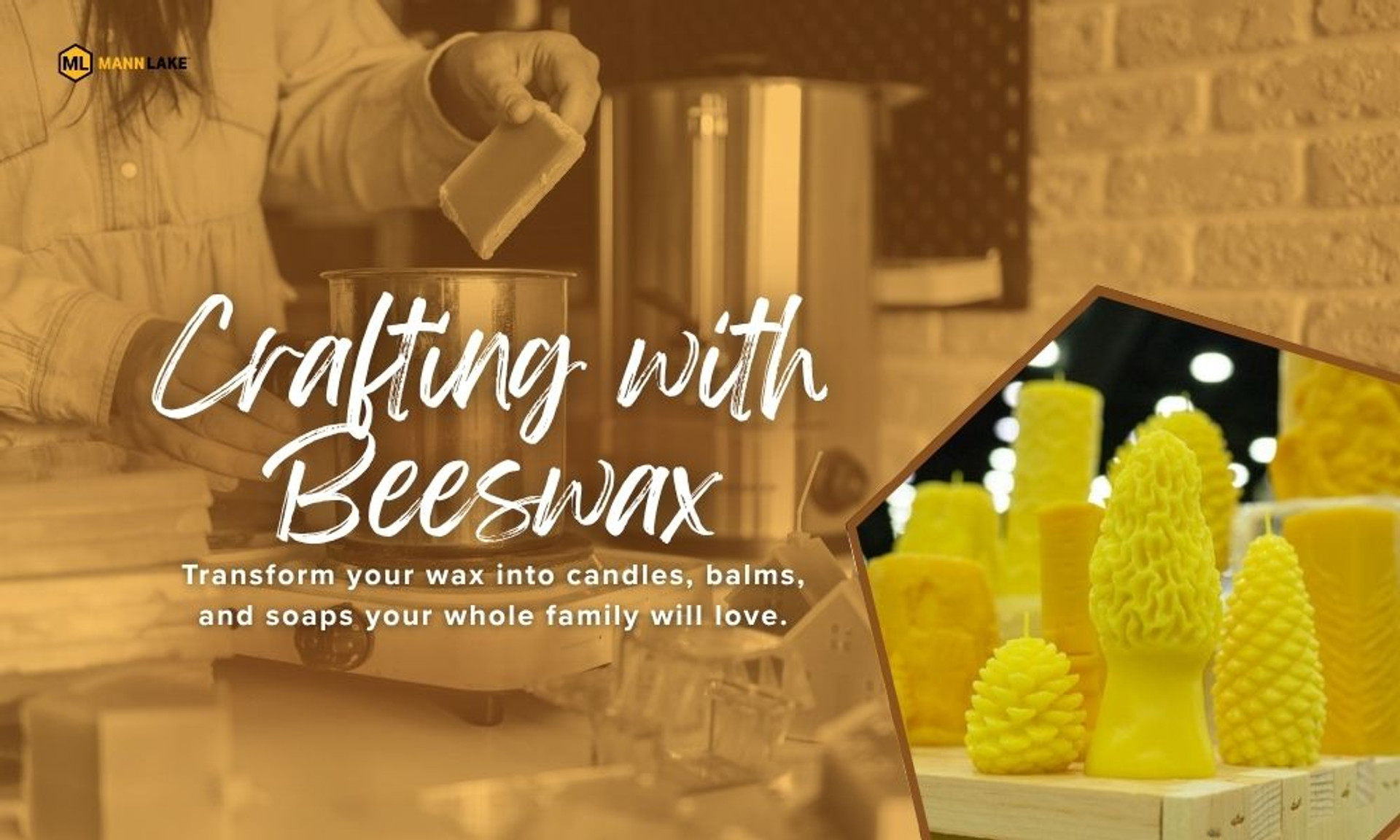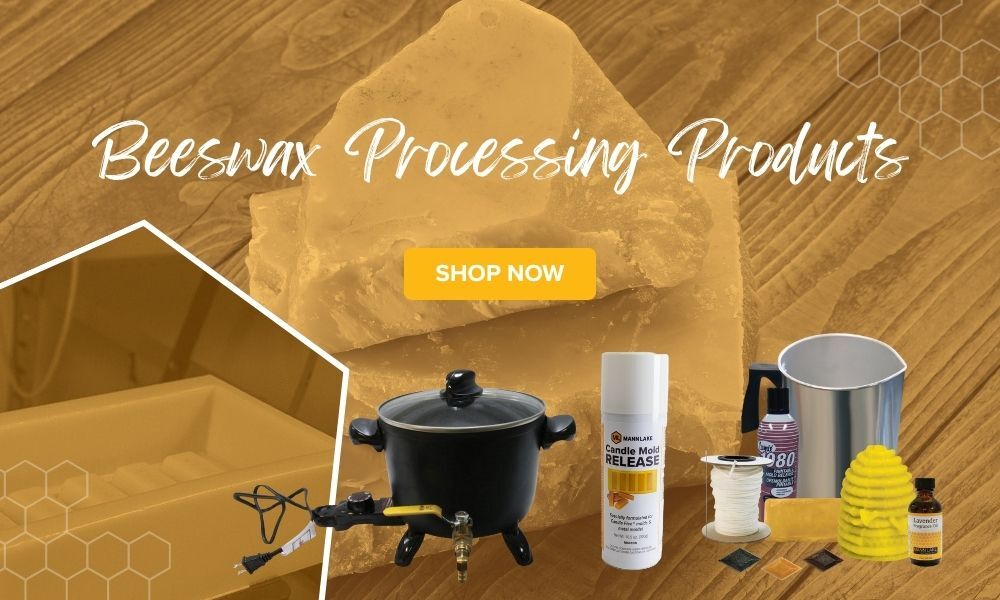Beyond Honey: Discovering the Many Uses of Beeswax
When most people think of beekeeping, honey naturally takes center stage. But alongside this golden treat comes another remarkable gift from the hive — beeswax.
Produced by honeybees to build the comb that houses both honey and brood, beeswax is far more than just a by-product. For centuries, it has been valued for its versatility, finding its way into everything from candles and cosmetics to natural remedies and household products.
At Mann Lake, we offer everything you need to process, purify, and put your beeswax to good use—from melters and molds to pure beeswax and ready-to-use products.
Tips for Processing Beeswax
Once you’ve extracted your honey, it’s time to process your beeswax so you can put it to use! Beeswax cappings usually have a bit of honey left behind. Larger operations often use a spinner to separate honey from the wax, but smaller-scale beekeepers can easily process wax at home with a few simple tools.
Here’s how to get started:
- Use a double boiler or melter: Slowly melt beeswax cappings to prevent scorching. The wax will float to the top while any remaining honey sinks to the bottom. Once cooled, the solidified wax can be easily separated. For easy, safe melting, try the 5-Quart Electric Beeswax Melter.
- Don’t forget to filter: Strain melted wax through a filter cloth or fine mesh to remove debris and impurities.
- Keep tools separate: Once used with wax, utensils can be tough to clean—so dedicate a set just for beeswax projects.
You can also render your wax outdoors using natural energy with the Wooden Solar Wax Melter, a low-maintenance, eco-friendly option.
Once your wax is clean and filtered, you can transform it into all kinds of useful and beautiful creations.
Candle Making
One of the most beloved uses for beeswax is candle making. Beeswax candles burn slowly, release a pleasant natural honey aroma, and produce a clean, steady flame. Unlike paraffin candles, they don’t release harmful chemicals and may even help purify the air by emitting negative ions.
You can make candles by pouring into molds, dipping wicks, or rolling sheets of beeswax—each method offering its own charm and creativity.
Start with high-quality Pure Beeswax Strip Wax (1 lb) or stock up with a bulk 25 lb Beeswax Block.
For shaping, try the 1 lb Beeswax Bar Mold or create a stunning design with the Honeycomb Cylinder Candle Mold.
Skincare & Cosmetics
Beeswax is a staple in natural skincare and cosmetic products thanks to its ability to lock in moisture, soothe dry skin, and support cell regeneration with vitamin A. Its mild antibacterial properties make it perfect for lip balms, lotions, salves, and ointments.
You can use pellets or pearls for easy melting, like Yellow Honey Wax Pearls, which blend smoothly into recipes.
Try this easy homemade beeswax lip balm recipe:
- 2 tbsp beeswax pellets (or grated beeswax)
- 2 tbsp coconut oil
- 1 tbsp shea butter or cocoa butter
- 5–10 drops essential oil (optional)
- Lip balm tubes or small tins
Melt the beeswax, oil, and butter together, stirring gently until smooth. Remove from heat, stir in essential oils if desired, and pour into containers. Let cool before using.
If DIY isn’t your thing, Mann Lake also offers ready-to-use Beeswax Lip Balm—a perfect example of beeswax’s moisturizing power.
Beeswax Wraps
Beeswax wraps are a sustainable, reusable alternative to plastic wrap—and a fantastic way to reduce waste in the kitchen.
Made by coating cotton fabric with melted beeswax, the wraps create a breathable, protective layer that keeps food fresh longer. The beeswax allows moisture to escape while preventing spoilage.
Use your melted Pure Beeswax Strip Wax to evenly coat cotton fabric, then let cool.
Care tip: Wash wraps gently with mild dish soap and cool water, then air dry. With proper care, beeswax wraps can last up to a year!
Waterproofing & Polishing
Beeswax isn’t just useful in the kitchen—it’s also a powerful natural tool for the home.
- Waterproofing: Rub beeswax into fabric or outerwear for a water-resistant finish.
- Leather care: Revive dry, cracked leather with beeswax-based balms.
- Wood polish: Combine beeswax with olive oil to create a simple, natural wood polish that restores shine and protects surfaces.
For household use, Pure Beeswax Blocks provide an easy-to-handle form for melting and blending into polish or balms.
Final Thoughts
Whether you’re crafting thoughtful homemade gifts, keeping food fresh, or giving your furniture a natural shine, beeswax proves to be one of the most versatile and sustainable products from the hive.
Keeping some on hand—like Mann Lake’s Pure Beeswax—ensures you always have a natural, eco-friendly solution ready for everyday life.






